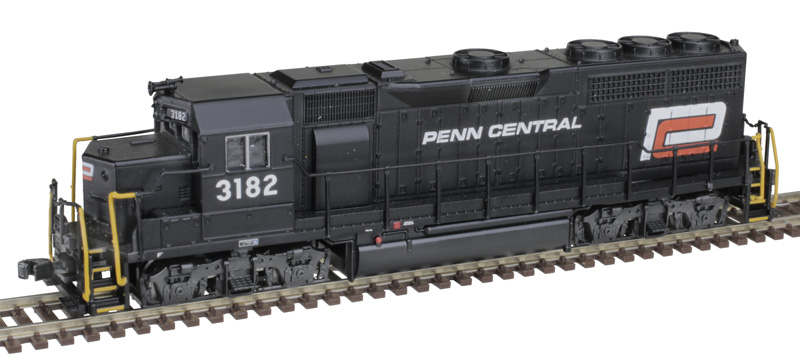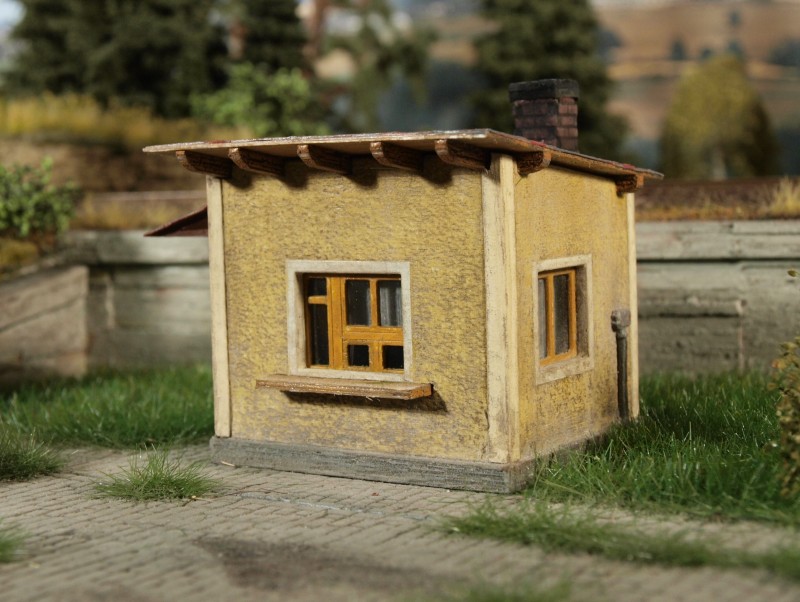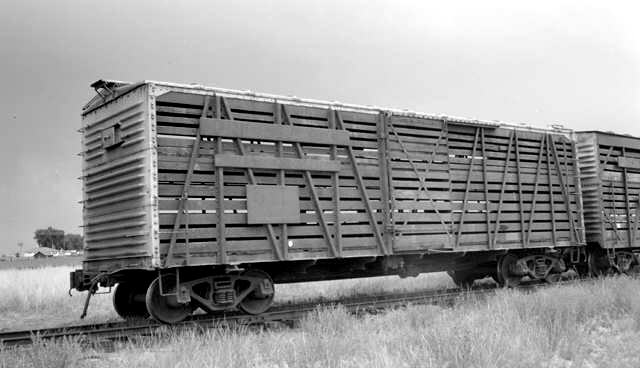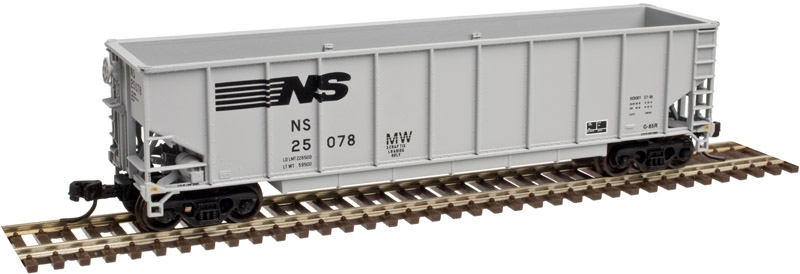Model Information: Con-Cor contracted Kato (Sekisui) of Japan to produce this model. Unlike other importers, Con-Cor owned the rights to the toolings so this enabled Con-Cor to later move the tooling from Japan to their Chicago plant. More recent (post-2000) releases are likely produced in China.
Prototype History: In US railroad terminology, a gondola is an open-topped rail vehicle used for transporting loose bulk materials. Because of their low side walls, gondolas are also suitable for the carriage of such high-density cargoes as steel plates, steel coils, and bulky items such as prefabricated sections of rail track. For weather-sensitive loads, these gondolas are often equipped with covers.
All-steel gondolas date back to the early part of the 20th century. However, most of the early ones were shorter and used 40' designs. The ubiquitous 50' steel gondola we see modeled so often today are typical of railcars produced since the end of the second world war. In the late 1940s, steel became once again readily available and new, longer gondolas were produced to transport material for America's booming economy. Generally, these 50 foot cars have a capacity of 70 tons and were actually 52'6" long. The first models of this design were produced by the Erie Railroad and the Greenville Steel Car Co, but nearly identical cars were produced by Pullman, ACF and Bethlehem.
All-steel gondolas date back to the early part of the 20th century. However, most of the early ones were shorter and used 40' designs. The ubiquitous 50' steel gondola we see modeled so often today are typical of railcars produced since the end of the second world war. In the late 1940s, steel became once again readily available and new, longer gondolas were produced to transport material for America's booming economy. Generally, these 50 foot cars have a capacity of 70 tons and were actually 52'6" long. The first models of this design were produced by the Erie Railroad and the Greenville Steel Car Co, but nearly identical cars were produced by Pullman, ACF and Bethlehem.
Road Name History: 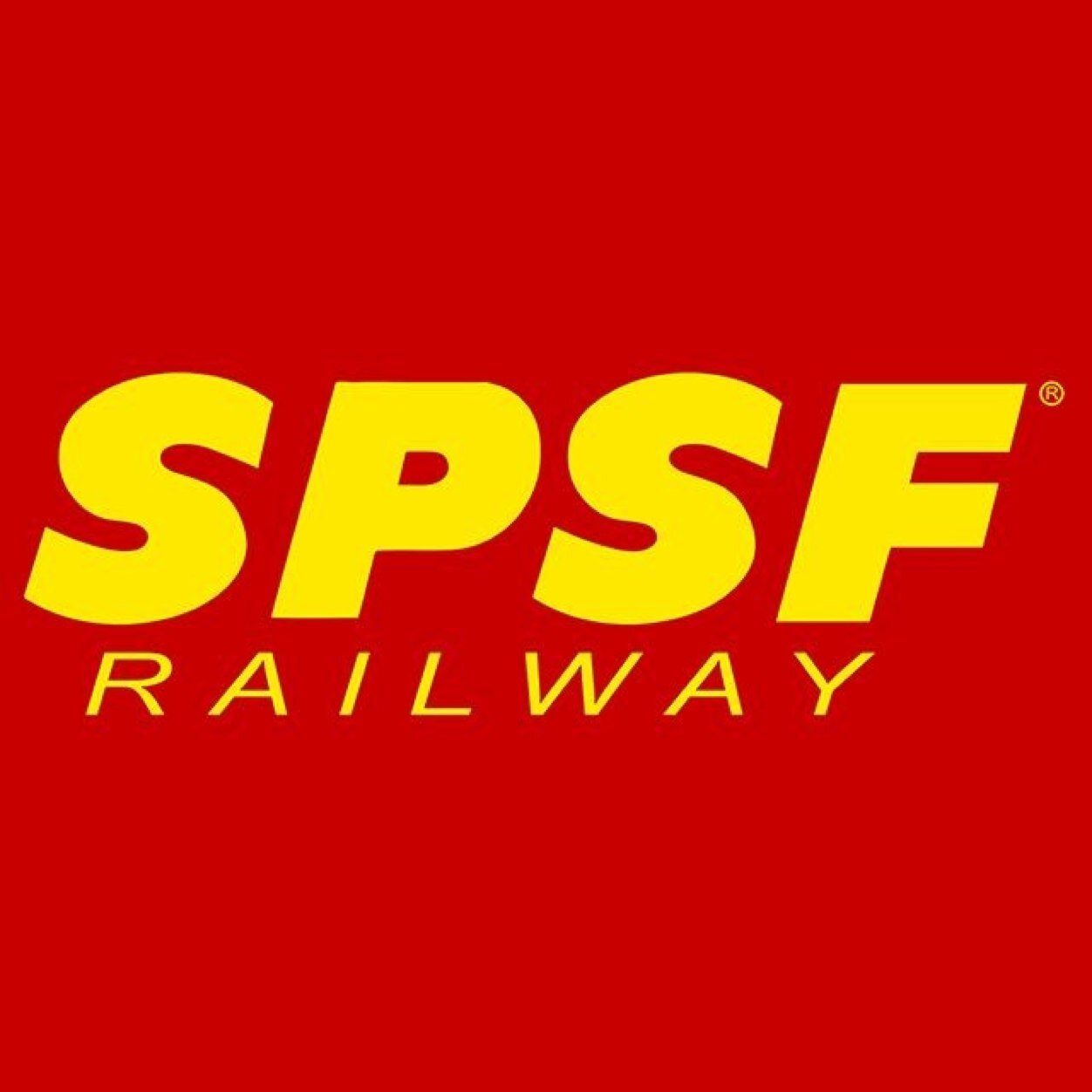 In the 1980s, The Atchison, Topeka and Santa Fe Railway (SF) and Southern Pacific Transportation Company (SP) attempted a merger. It began with the merger of holding companies Santa Fe Industries and the second incarnation of the Southern Pacific Company on December 23, 1983 to form the Santa Fe Southern Pacific Corporation (SFSP), which held the SP shares in a voting trust. After the Interstate Commerce Commission denied the merger, SFSP sold the SP to Rio Grande Industries on October 13, 1988, and was renamed Santa Fe Pacific Corporation on April 25, 1989.
In the 1980s, The Atchison, Topeka and Santa Fe Railway (SF) and Southern Pacific Transportation Company (SP) attempted a merger. It began with the merger of holding companies Santa Fe Industries and the second incarnation of the Southern Pacific Company on December 23, 1983 to form the Santa Fe Southern Pacific Corporation (SFSP), which held the SP shares in a voting trust. After the Interstate Commerce Commission denied the merger, SFSP sold the SP to Rio Grande Industries on October 13, 1988, and was renamed Santa Fe Pacific Corporation on April 25, 1989.
The merger was opposed by the Justice Department in 1985 and denied in a 4–1 vote by the Interstate Commerce Commission (ICC) on July 24, 1986, who ruled that such a merger included too many duplicate routes and was therefore monopolistic. The Commission denied SFSP's appeal (again in a 4–1 vote) on June 30, 1987.
The holding company, ordered to operate the Southern Pacific at arm's length until it sold it, disposed of it on October 13, 1988 to Rio Grande Industries for $1.02 billion and the assumption of SP's debt, which consolidated the SP with its Denver and Rio Grande Western railroad under the Southern Pacific name. The holding company retained all the non-rail interests of both predecessors and shortened its name to Santa Fe Pacific Corporation (though all of the California real estate holdings were consolidated in a new company, Catellus Development Corporation, becoming the State's largest private land owner. Catellus subsequently purchased the Union Pacific Railroad's interest in the Los Angeles Union Passenger Terminal).
In 1995, the Santa Fe railroad merged with the Burlington Northern Railroad to form the Burlington Northern and Santa Fe Railway (BNSF), and the SP was bought out by the Union Pacific Corporation the following year.
From Wikipedia

The merger was opposed by the Justice Department in 1985 and denied in a 4–1 vote by the Interstate Commerce Commission (ICC) on July 24, 1986, who ruled that such a merger included too many duplicate routes and was therefore monopolistic. The Commission denied SFSP's appeal (again in a 4–1 vote) on June 30, 1987.
The holding company, ordered to operate the Southern Pacific at arm's length until it sold it, disposed of it on October 13, 1988 to Rio Grande Industries for $1.02 billion and the assumption of SP's debt, which consolidated the SP with its Denver and Rio Grande Western railroad under the Southern Pacific name. The holding company retained all the non-rail interests of both predecessors and shortened its name to Santa Fe Pacific Corporation (though all of the California real estate holdings were consolidated in a new company, Catellus Development Corporation, becoming the State's largest private land owner. Catellus subsequently purchased the Union Pacific Railroad's interest in the Los Angeles Union Passenger Terminal).
In 1995, the Santa Fe railroad merged with the Burlington Northern Railroad to form the Burlington Northern and Santa Fe Railway (BNSF), and the SP was bought out by the Union Pacific Corporation the following year.
From Wikipedia
Brand/Importer Information: Con-Cor has been in business since 1962. Many things have changed over time as originally they were a complete manufacturing operation in the USA and at one time had upwards of 45 employees. They not only designed the models,but they also built their own molds, did injection molding, painting, printing and packaging on their models.
Currently, most of their manufacturing has been moved overseas and now they import 90% of their products as totally finished goods, or in finished components. They only do some incidental manufacturing today within the USA.
Important Note: The Con-Cor product numbering can be very confusing. Please see here in the article how to properly enter Con-Cor stock numbers in the TroveStar database.
Currently, most of their manufacturing has been moved overseas and now they import 90% of their products as totally finished goods, or in finished components. They only do some incidental manufacturing today within the USA.
Important Note: The Con-Cor product numbering can be very confusing. Please see here in the article how to properly enter Con-Cor stock numbers in the TroveStar database.
Item created by: Tower55 on 2023-04-24 18:07:49
Last edited by: Alain LM on 2024-11-16 12:01:26
If you see errors or missing data in this entry, please feel free to log in and edit it. Anyone with a Gmail account can log in instantly.
Last edited by: Alain LM on 2024-11-16 12:01:26
If you see errors or missing data in this entry, please feel free to log in and edit it. Anyone with a Gmail account can log in instantly.






